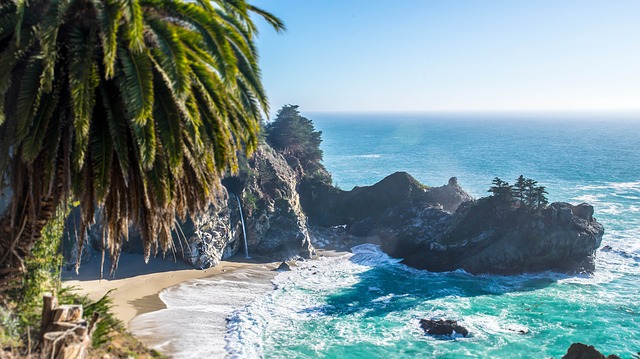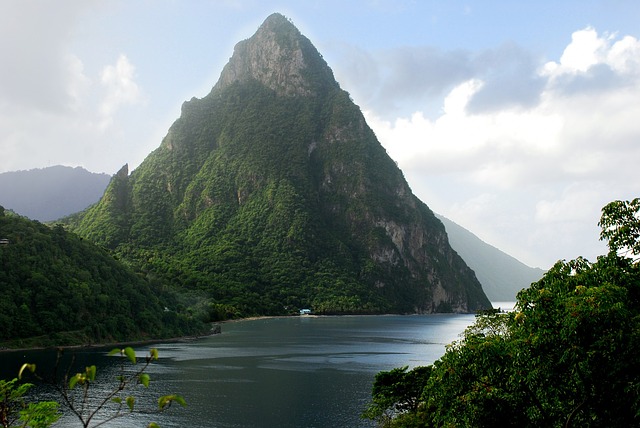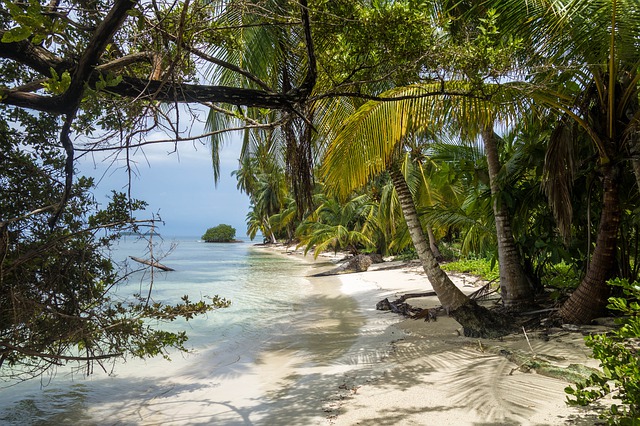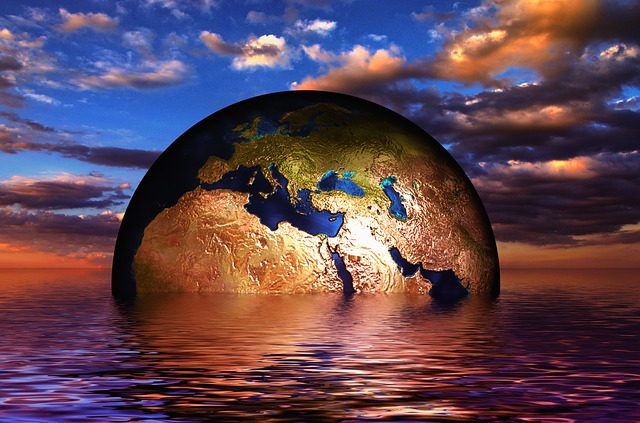Geography and climate in the Caribbean region for beginners

Silky beach in the mountainous region, with palm trees in the front, perfect example of the geography and climate in the Caribbean region
If you are having thoughts of moving to the Caribbean region, you are in for a treat. The land is just beautiful, and a dream place for many. Nonetheless, you should put effort into learning about geography and climate in the Caribbean region. That will enable you to prepare for the move more easily, and also navigate the area once you relocate. With that in mind, read this crash course for beginners, and start learning about the Carribean region today!
Geography and climate in the Caribbean region
When talking about geography and climate in the Caribbean region, the first thing I should mention is that the Caribbean consists of many islands. Depending on which island you are visiting, the terrain will look different.
The Caribbean splits into two major regions, Greater Antilles and the Lesser Antilles.
For example, Aruba, Barbados, Curacao, Saint Croix, Bonaire, Cayman Islands, the Bahamas, and Antigua have relatively flat terrain. They are non-volcanic, and thus much safer.


Caption: Mountain regions of the Caribbean are full of active volcanos
All other regions have rugged mountains of volcanic origin.
History of volcanoes in the Caribbean
It is crucial that we talk about the history of volcanoes in the Caribbean. If you are moving to a dangerous region, you should be aware of that. At the moment, there are 19 live volcanoes in the Caribbean. They are likely to erupt again, and they are spread between Grenada and Saba.
Furthermore, there are also underwater volcanoes in the Caribbean.
What causes volcanoes in the Caribbean?
The entire Eastern Caribbean is a volcanic region, due to the fact that it lies on the boundary between two tectonic plates, the North American Plate and the Caribbean Plate. When shifting occurs, the denser of two plates sinks, thus creating pockets for magma to flow out. That is how volcanoes are formed.
Caribbean waters
The coast of the Caribbean sea is full of silky beaches. Water is cristal clear and sky-blue, and it is home to many migratory schools of fishes and turtles. Furthermore, it is abundant with coral reefs.
The deepest point in the Atlantic ocean is the Puerto Rico Trench. It is right there, where the Atlantic Ocean meets the Caribbean Sea.
The climate in the Caribbean region
The climate in the Caribbean region varies between areas. It is mostly tropical, which means you get to experience tropical monsoon, tropical rain forest, as well as tropical savanna. Furthermore, there are some arid regions, where you can see drought throughout most of the year. Mountain peaks are much colder, and they are mostly in the temperate climate.


Rainfall
Depending on the water current, size, and elevation, rainfall varies in every region. Moist, trade winds are coming from the east, and they are the reason for droughts and rain forests.
To summarize:
- tropical rainforest – lowland areas from Costa Rica to Belize, Puerto Rico, Dominican Republic
- tropical savanna – northern Colombia and Venezuela, Cuba, southern Yucatán, and Mexico
- arid regions – northern coast of Venezuela, Curacao, Aruba
Climate changes in the Caribbean
Global climate changes are affecting more and more regions of the world, and the Caribbean is no exception. These changes are posing a threat to the economy, lifestyle, and general safety of the Caribbean islands.
At the moment, there are a lot of town meetings regarding climate changes. People are trying to find the best solutions to the posing threats, and protect the land and the people. Human mobility is the number one topic of concern.
The intention isn’t to frighten you or have you change your mind regarding moving to the Caribbean. It is essential that you are aware of the geography and climate in the Caribbean region before you start looking for movers in your area in a hurry.
The rise in the sea level is expected
According to NASA research, by the year 2100, the sea level will rise between 1–4 ft. That change will affect most of the coastal cities bellow the level. That affects almost 32 million people. Furthermore, the entire tourism industry in these regions is in danger. Coastal financial loses could range somewhere between $940 million and $1.2 billion USD. That is entire Latin America and the Caribbean included.
Increased temperature
The rise of the sea and air temperature may produce stronger hurricanes, also known as tropical cyclones. According to the United States National Hurricane Center, the entire North Atlantic basin is highly active when it comes to hurricanes.
The hurricane starts as a tropical storm, and it transforms due to the change in the air and sea temperature. Since 2017, four tropical storms in this region have become hurricanes once they reached the Caribbean. Two level-5 hurricanes that hit the Caribbean were Irma and Maria, and they caused a lot of destruction in the areas of Cuba and Puerto Rico.
The impact of climate changes on the social and economic state
With the climate changes that are due to happen in the next 50 – 100 years, the social life and the economic state of the Caribbean are in danger.


The history of the Caribbean is rooted in colonialism for goods extraction. As a result, they depend on colonial entities. Because of that, they cannot be self-sufficient. The lack of ability to compete with world economies today is what endangers the Caribbean the most. Tourism generates the biggest amount of income for these regions, and if tourist visits go down because of the hurricanes and floods, the Caribbean islands will suffer a lot.
The Caribbean islands are beautiful, and a good time is guaranteed. Over 30 million tourists still visit the Caribbean over the entire year, and there are plenty of safe regions for you to consider. Know that moving to the Caribbean is a lifetime opportunity for many, so if you have your chance, be sure to use it!





